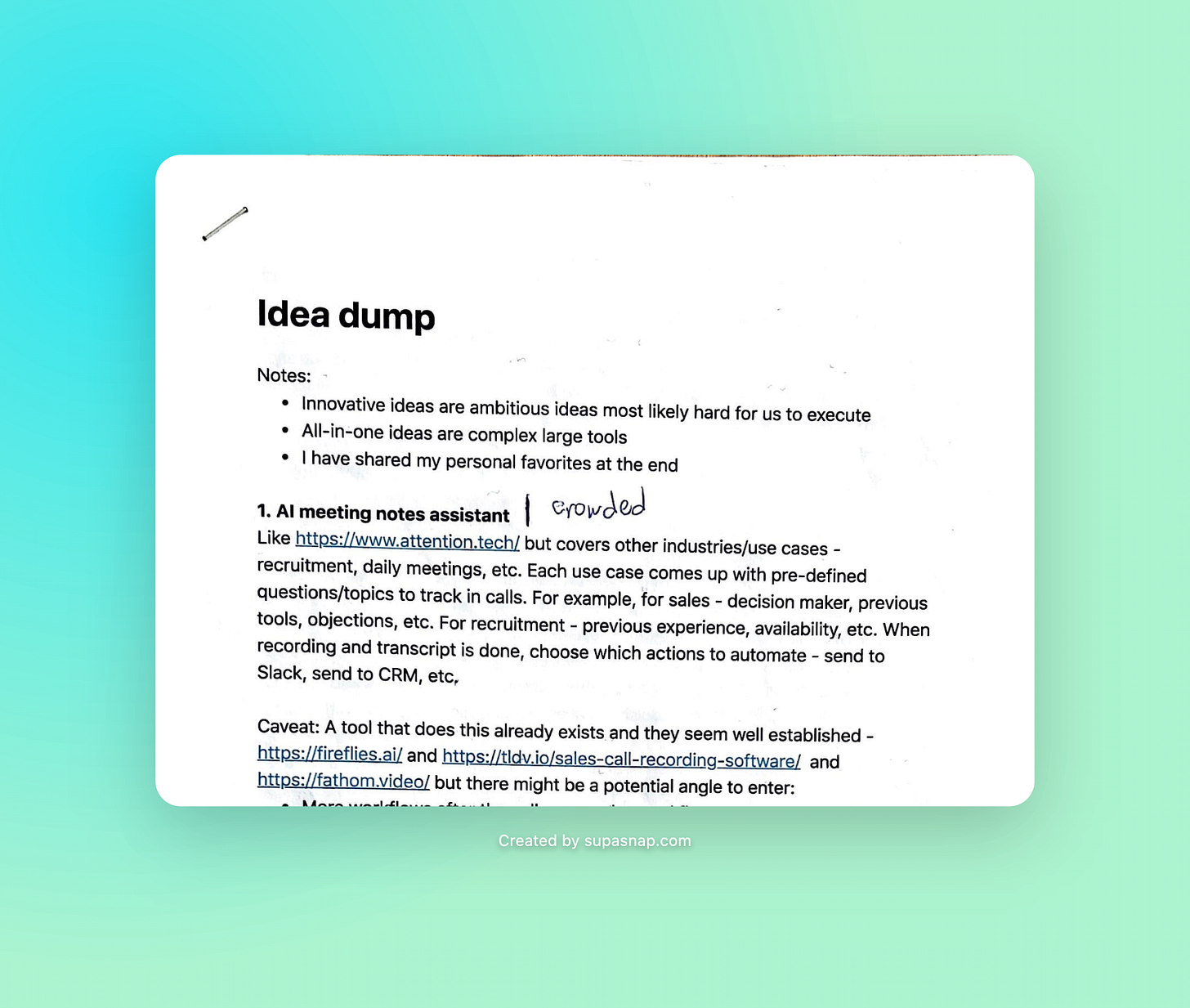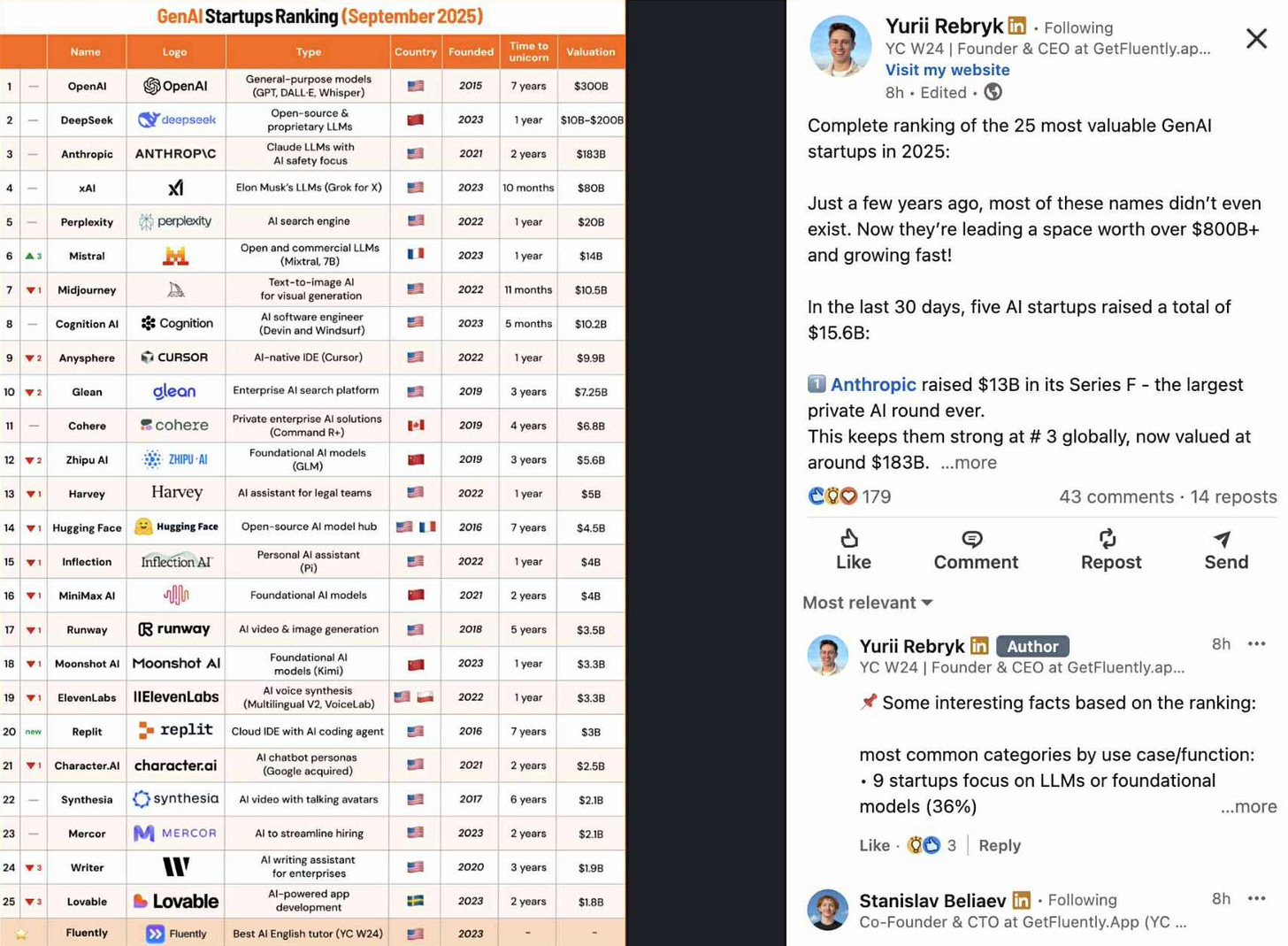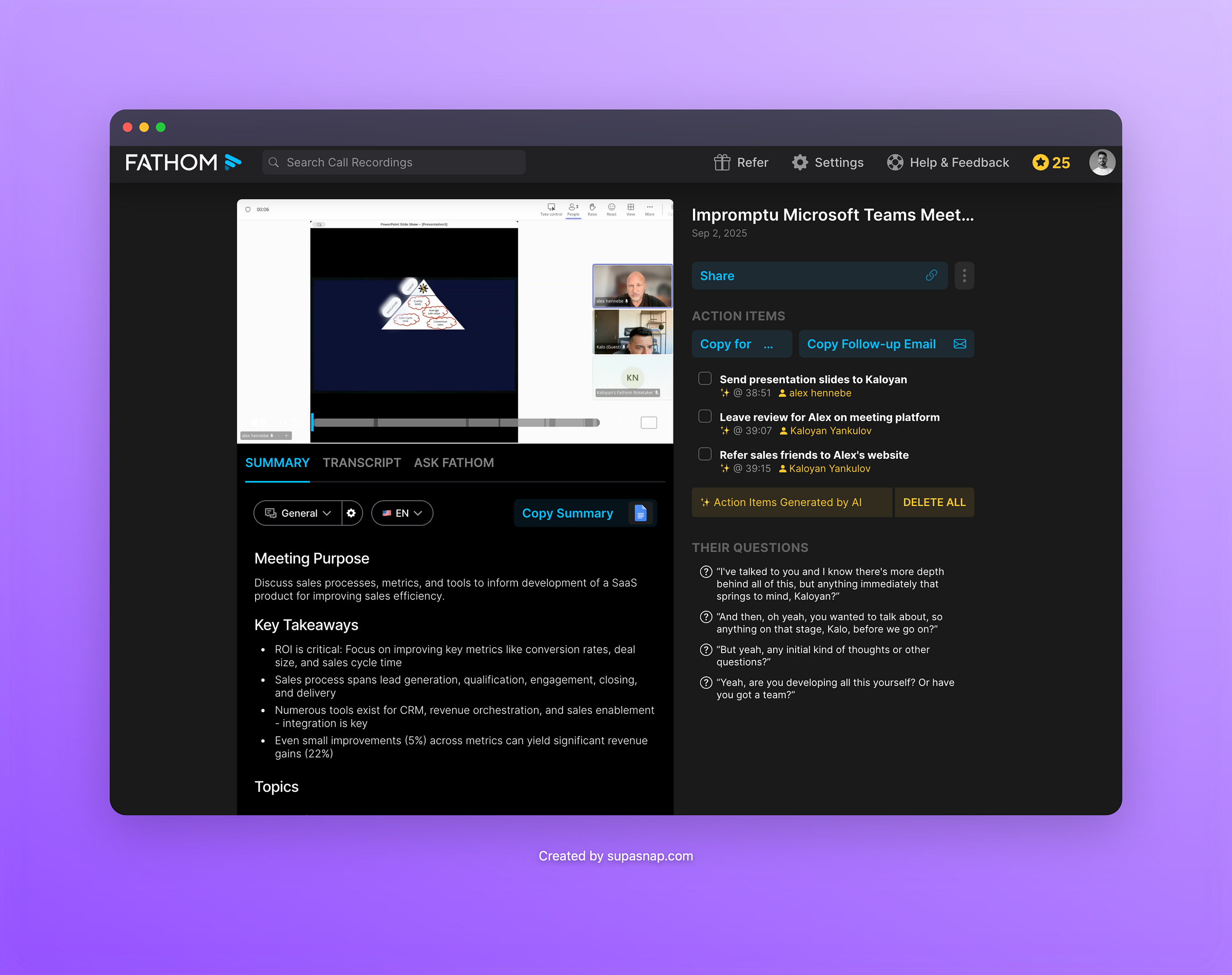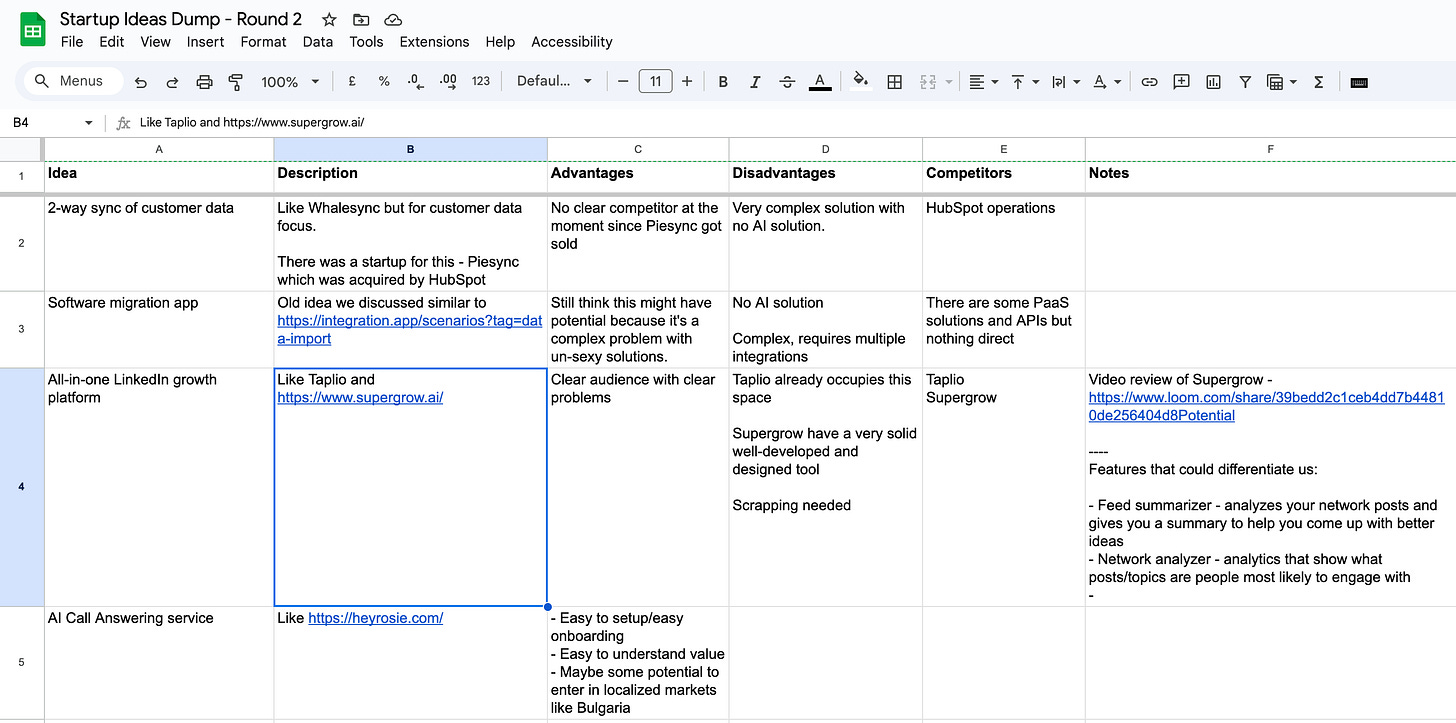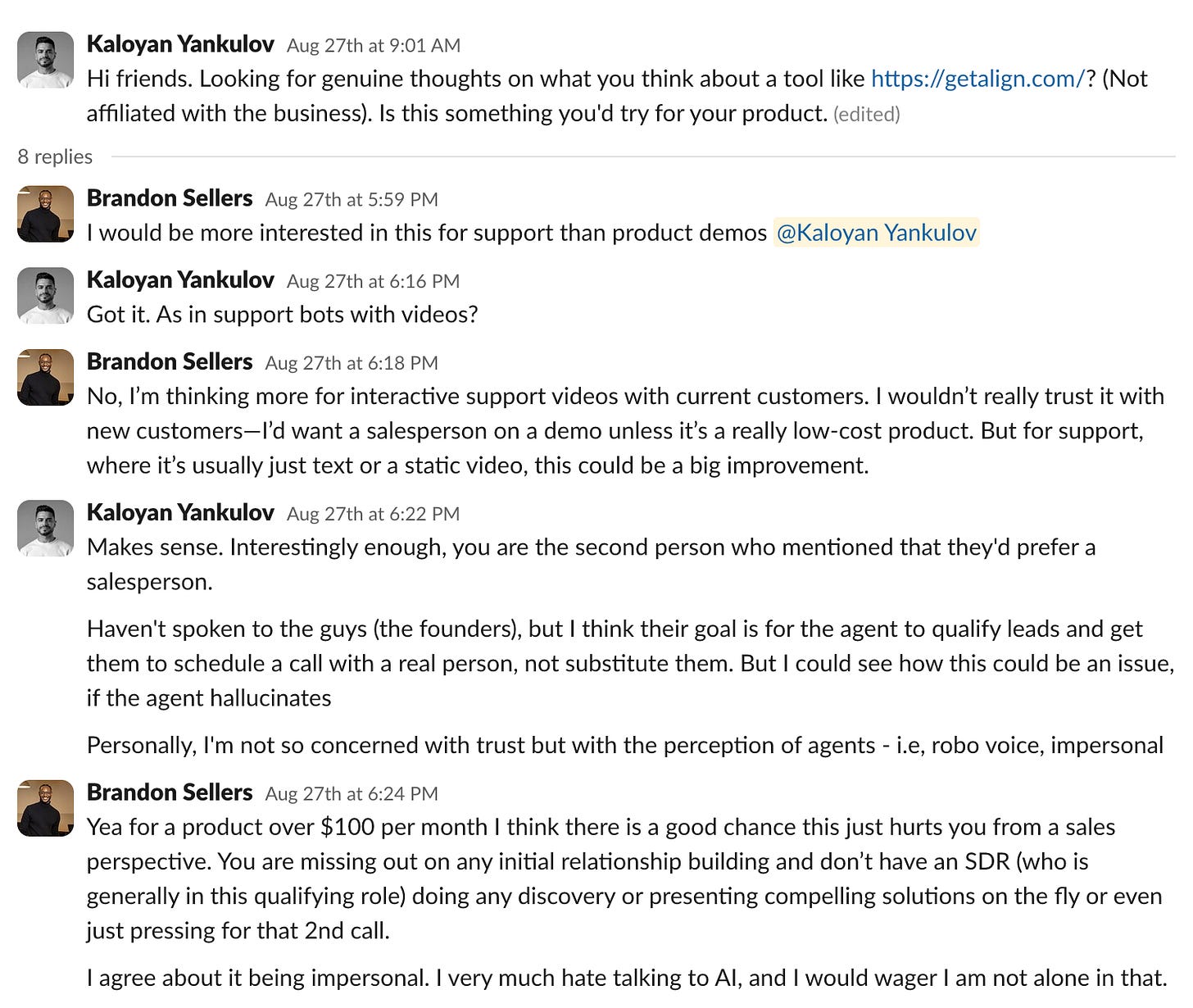Week 0: Coming Up With Startup Ideas
My approach to idea dumping..uh, I mean brainstorming. The good & and the bad ideas
TL;DR
I created an "idea dump" of 20+ startup concepts + researched competitors. Most ideas looked promising on paper but fell apart during validation. Here's my raw, unfiltered process for evaluating startup ideas and what I learned about turning concepts into reality.
Hey friends, I'm Kalo. I sold my SaaS business Encharge last year and now I'm starting from square one again. This is the first practical post in a series where I'm sharing everything behind the scenes as I build my next startup in public.
The Time Machine: My First Idea Dump
Let me take you back a couple of years, even before selling Encharge. Like most creators, I began with what I call the "startup idea dump".
I found my first one from ~2023. It contains 21-22 different ideas, mostly AI-based tools. Fascinating to see how things have evolved since then.
Some of these ideas became massive businesses. One was Glean.com, now ranked among the top 10 highest-valued AI startups with a $7+ billion valuation.
Others have literally ceased to exist (URLs no longer work), such as collato.com. Many features I sketched out have been launched by major platforms. You snooze you lose mantra is multiplied by 100x in the AI age.
The Ideas That Didn't Age Well
AI Meeting Notes Assistant: Extremely crowded even back then, now dominated by excellent players like Fathom, which I currently use for all my sales and customer development calls.
All-in-One AI Product-Led Sales Platform: This was just trying to out-feature competitors with a massive scope - definitely not a good idea for a bootstrap founder.
PQL Qualifier (Automated Lead Scoring): The market is well-served by tools like Mad Kudu. For small startups, simple qualification criteria are usually sufficient. More sophisticated scoring requires enterprise-level organizations, and that market is already competitive. Additionally, accurately implementing lead scoring is a significant challenge.
Natural Language Bot for Google Spreadsheets: Formulabot had already reached 26,000 MRR in 2023. Airtable launched this feature last year, and it works amazingly well. Expect Excel/Google Sheets to launch AI semantic formulas as we speak.
The Innovative Ones
ChatGPT Bot for Product Onboarding: Instead of help docs, it shows you how to do things directly in the product. Opens emails and guides users through setup processes. I marked this as innovative because I haven't seen anyone doing this at a functional production level yet.
Glean.com Without Enterprise Pricing: Glean starts at $55,000 per year, with a very enterprise-focused approach. A version without the "get demo" pricing could be interesting for smaller organizations.
Blog Post Editing Tool: I had this idea before ChatGPT's deep search existed. Now that AI + AI search is almost eliminating deep content, people care more about unique insights and perspectives that AI cannot replicate.
The Updated Idea Dump
Fast forward to my recent research, I've been compiling a new list over the past few weeks.
Here are some standouts:
Call Agents
HeyRosie generates around $50-60K MRR. You call your local hairdresser, and get greeted by an AI agent that sounds almost human. Works well for inbound calls, but not so much for outbound (robocalls aren't legal in the EU and the US anyway).
Pro tip: If I’m to build a voice-based toold I’d use Vapi. Read my full review on Vapi.
Product Demo Agent
Handhold.io – they do an agent for product demos and user activation, sitting between support bots and sales, with a focus on demos that include step-by-step tutorials.
Pro tip: Use competitors to validate. When there's already a direct competitor in early development, you don't need to build from scratch. Use their tool to gauge interest and traction.
I reached out to Slack communities asking about Handhold. Key objections emerged:
Most founders don't want to substitute real salespeople with agents
People wouldn't use it for high-value tickets (one person said only if ACV is under $100)
Digital Sales Rooms (DSRs) for SaaS
Going back to my Encharge days, I often sent long emails after sales calls with next steps, links, documentation, APIs. A tool to organize this would have been valuable.
I discovered there's a whole category called "Digital Sales Rooms" – microsites or glorified Google Drives where salespeople collect sales collateral. My idea: what if this were AI-first (automatically generated DSRs with AI) instead of legacy tools with AI sprinkled on top?
After speaking with salespeople, I learned that they only use DSRs for high-value tickets ($10,000+ ACV), and there aren't enough of these customers/leads to justify scale and automation. They already have templates, and the manual process doesn't take much time.
Sales Intelligence Signal Mapping
These tools (CommonRoom, UserGems, etc.) track time-based activities, such as when leads change jobs, post on LinkedIn, or display any intent signals (which could be as implicit as viewing your LinkedIn profile).
My thinking: merge inbound motion with outbound for product-led SaaS, i.e., unify signals from 1st party data (Segment.com behavior activity, for instance) with 2nd and 3rd party data (CRM activity, enrichment, etc.)
Short answer: There’s no market gap. People engaging in "hot outbound" (reaching out to inbound leads proactively) already utilize existing outbound solutions for signals and lead enrichment. Also, the sales tooling market seems tired — salespeople paying for too many tools and not using them enough.
The Micro-Acquisition Detour
After the exit, I also considered buying a micro tool from Microns.io or MicroAcquire.
I put a list of potential startups to buy:
My research conclusions:
Pre-revenue startups are of low quality
Most didn't have working public domains
Many were just AI wrappers
Products often didn't work
However, some tools with traction caught my attention. I considered acquiring one and selling it to AppSumo to recoup investment, then using that as a growth engine. But in the end, I decided against this approach because I wasn't passionate about products I hadn't founded, especially tiny single-point solutions.
Key Lessons from the Idea Phase
Ideas are worthless without talking to people. I think it's good to brainstorm, but you really need to put them to the test.
The main value was discovering what I gravitate toward, my founder-idea fit. You're always drawn to specific types of ideas, certain audiences you like working with. For me, as a marketing person, I keep coming back to sales and marketing tools for SaaS companies.
Use existing competitors for validation. If someone's already building what you're thinking about, use their tool and gauge market interest rather than starting from scratch.
Talk to real users early. Every idea that looked promising on paper fell apart when I actually spoke to potential customers about their real problems and workflows.
This journey is just beginning. If you want to follow along as I build in public, subscribe here and to my YouTube channel.
The goal isn't just to pick any idea. It's to find the right idea that matches my skills, interests, and market opportunity. That process is messier and more iterative than most people share publicly.
In my next post, I'll dive into:
How I organize research for startup ideas using ClickUp
Quick frameworks for evaluating ideas
My exact templates for collecting feedback and brainstorming
10 characteristics of a good startup idea for bootstrap founders
How I do deep competitive research and G2 analysis
Follow me:


